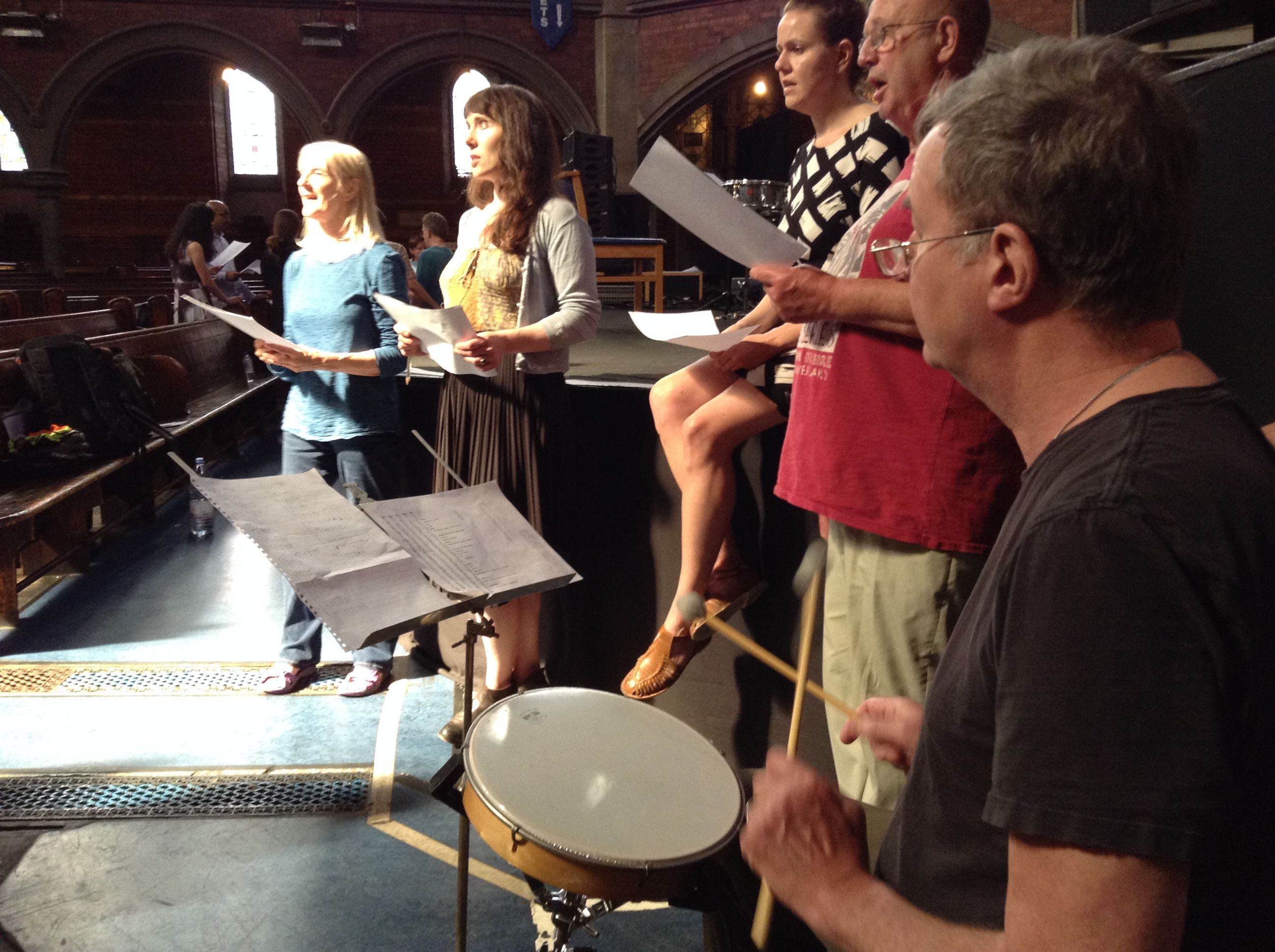Having heard Max Reinhardt’s deeply unsatisfactory introduction to La Monte Young’s Well-Tuned Piano (to put it kindly) the other day, I approached Robert Worby’s fifteen-minute talk about Cage’s 4’33” in The Essay: Five Seismic Moments in New Music (BBC Radio 3), with hope, as he has background — form — in experimental music. And it was really pretty good. Worby talked about his own first performance (on classical guitar), and discussed the way that performance is (or should be) active, rather than passive, and the shared element of listening between performer and audience.[1] And of course he mentioned the role of the environment in the piece.[2]
Worby mentions some restrictions that I have not found in a reading of the separate editions of 4’33” (David Tudor’s reconstruction of the original Woodstock score, the time-space notated Kremen score (and its slight variant in Source, and the published Peters ‘verbal’ score), especially the Peters edition, to which he refers. Worby stressed the idea that the three movements are required in all performances, and there is no such direction. He also seemed to suggest that one had to make some kind of gesture toward playing (Tudor depressing the pedal before closing the keyboard fall; Worby fingered different chords for each section in his performance). This doesn’t appear in the scores, so it isn’t a requirement that the performer do so.[3] Finally, Worby gave his political interpretation of the piece as resistant against McCarthyism and possibly homophobia. However, this, like his thoughts on the shared listening element in 4’33”, added a very welcome analytical conclusion to his narrative.
This was, given the introductory nature of the essay, a good take on 4’33”. It is certainly better by far than some of the mis/disinformation promulgated by writers in ‘academic’ publications who have never seen the score. Factually, you might get more from Kyle Gann’s book, No Such Thing as Silence: John Cage’s 4’33”. Perhaps Worby got some of his information from this book, or from Larry Solomon’s long-standing web page, 4’33”. But this is more immediate, especially for a student who is new to indeterminacy. Worby makes a great story teller; it’s well worth a listen even if you’re an old hand.
You can get this essay for a limited time (I’m not sure how long) on the BBC Listen Again pages: http://www.bbc.co.uk/programmes/b06tks32
[1] At the Royal Musical Association graduate student conference at Goldsmiths College in 1989, one presenter proved his thesis that 4’33” was not a composition by sitting down at a piano, starting a stopwatch, and fidgeting for the three durations given in the Peters edition. I asked, have you ever seen a proper performance of this piece? He said he had just performed it and I replied no, you certainly did not perform it, at least not correctly. The discussion entered into social and ethnomusicological connotations of silence, which was fascinating. The presenter, a young master’s student who had obviously been given poor instruction by his advisers, was mostly silent.
[2] My personal favourite performance was at the end of the Classic Masterworks of Experimental Music Festival at the University of Redlands, 1982, which I curated. The night being warm, the stage doors were open. Given that the other pieces on the concert — Terry Riley’s In C and Frederic Rzewski’s Les moutons de Panurge — were very loud, no one noticed the sounds of the outdoors until 4’33”, when the room filled with the sounds of Saturday night on campus; the stereo sounds and happy party shouts of the boys’ dorm immediately behind the hall, and, further, the shouts and cheers of a school football game. I called this sound event an Ivesian moment in my article on time and listening in experimental music, ‘(Re)Marking Time in the Audition of Experimental Music’, in Performance Research, which is available on my Academia.edu page.
[2] I simply put the cap on my clarinet mouthpiece; when we did it in a wind band performance, we suggested putting the instruments at ‘attention’ on the players’ laps, but this was a performance decision not a score response. I discuss the distinction between the exact content of indeterminate scores and performance decisions in ‘The Beginning of Happiness: Approaching Scores in Graphic and Text Notation’, in the book Sound and Score, also available on Academia.edu.




